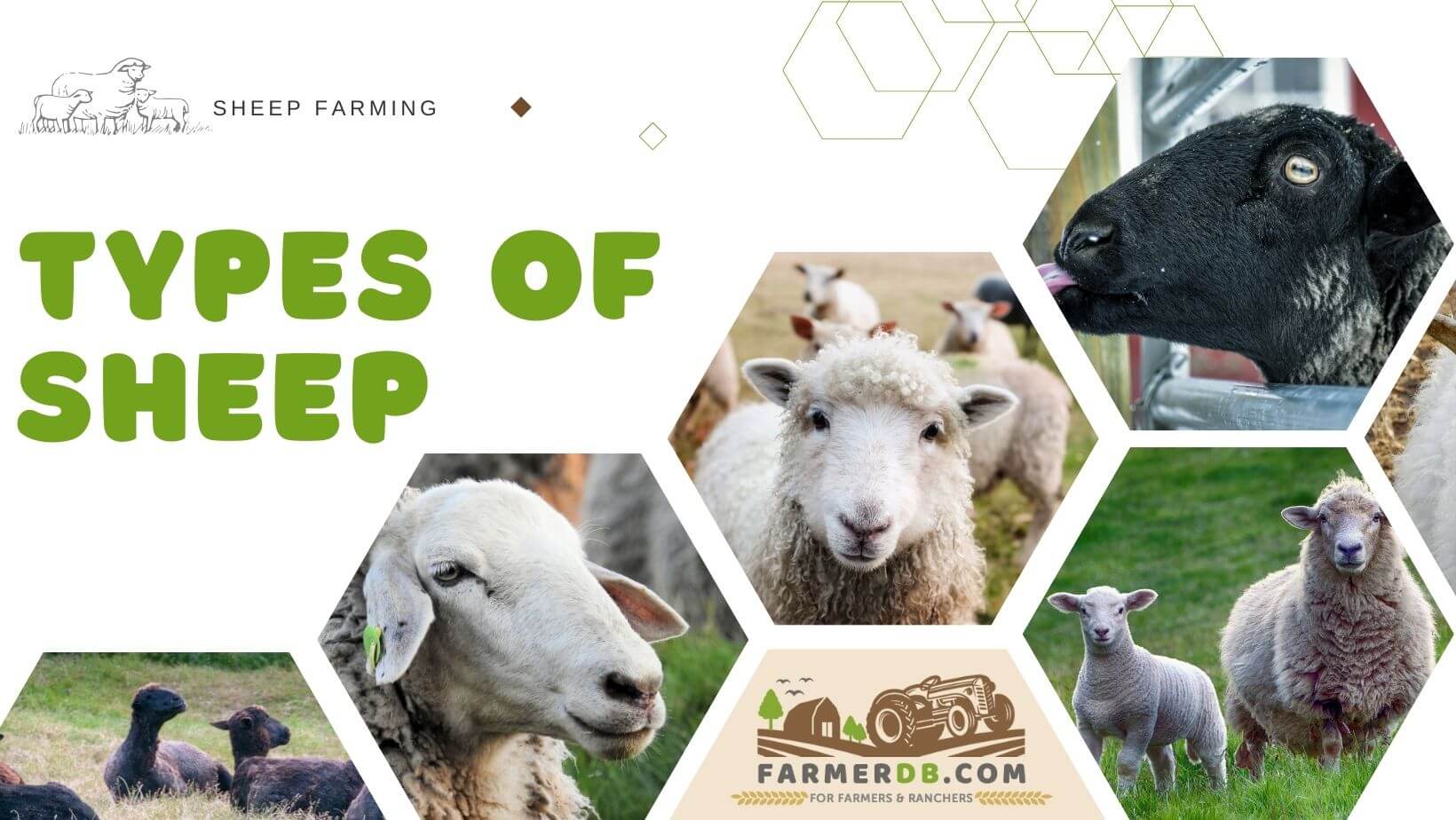
Sheep have been a part of human livestock for thousands of years.
Sheep farming has always played a significant role in agriculture and beyond. They serve numerous purposes through their meat, milk production, wool, and prolific nature.
But each sheep usually fulfills one, or at most two, specific uses.
This is why certain types of sheep were carefully preserved and continuously bred to maintain their unique characteristics, while other sheep breeds were and still are created through crossbreeding, inheriting only the most advantageous traits.
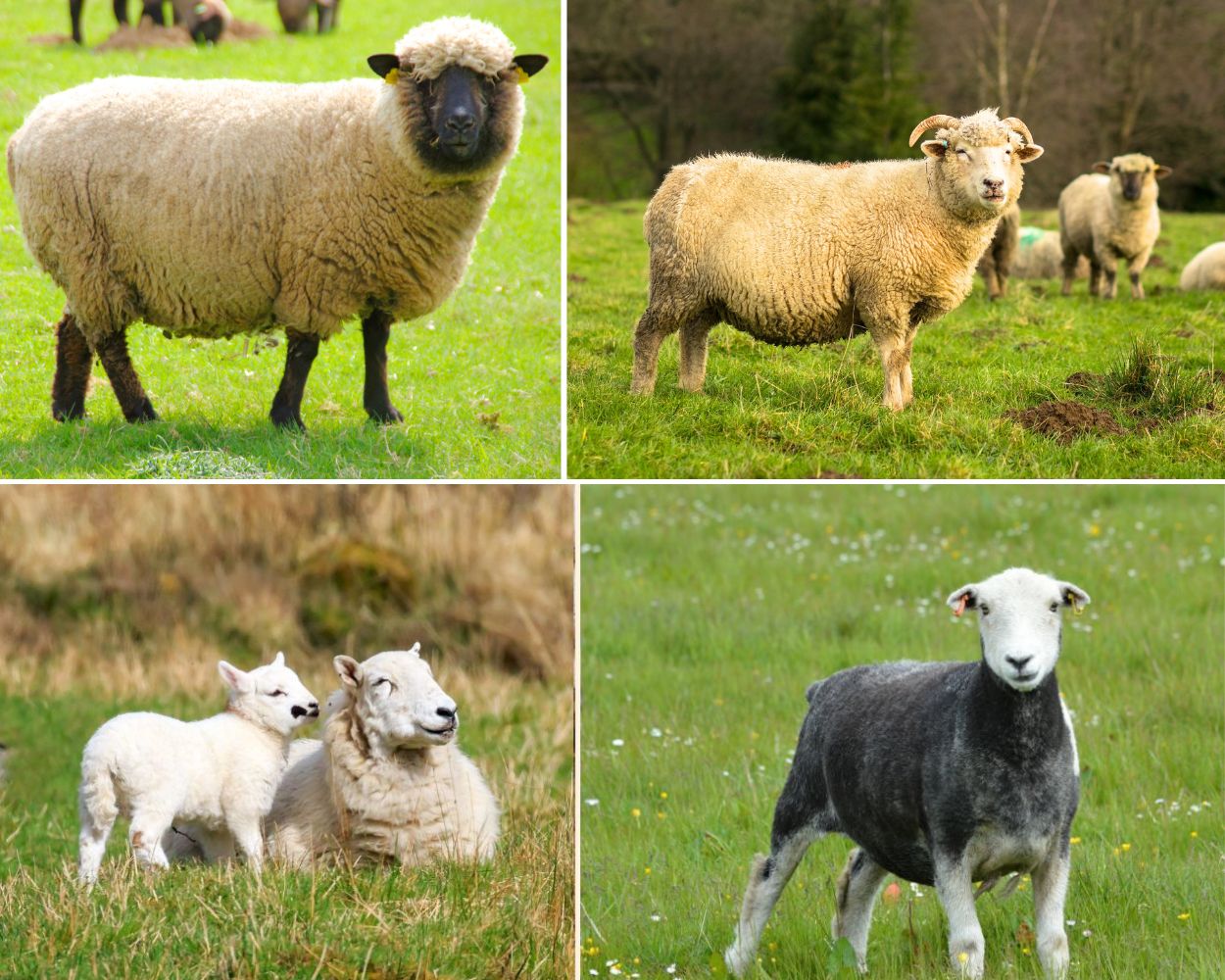
In this article, I’ll introduce and explain to you the sheep types, how they are commonly classified in the farming world, and learn about selecting the right one for your needs.
For each type of sheep breed, I will give you examples of sheep breeds that I believe are among the greatest choices for homesteaders and farmers.
Type of Sheep based on Usage
When classifying the types of sheep, they are commonly divided based on the primary purpose they serve for humans.
This division typically matches the specific goals of farmers and what they aim to produce, such as meat, dairy, or wool.
The type of sheep is closely linked to the farmer’s objectives.
For instance, if a farmer wants to focus on wool production, they will be interested in sheep breeds that produce high-quality wool.
Similarly, the farmers aiming for meat or dairy production will search for breeds specialized in those areas.
Let’s explore the different types of sheep based on their main usage or purpose:
Sheep for Meat

The meat sheep breeds are some types of sheep that differentiate from others through their body size.
These sheep, specifically raised for meat production, have larger bodies with well-developed muscles. Due to their massive bodies, these meat sheep produce a good amount of meat yield.
Apart from their robust bodies, they also have a higher growth rate, good mothering skills, and docile behavior.
The following are among the prominent breeds of meat sheep Oxford sheep, Dorset sheep, Cheviot sheep, Suffolk sheep, and Katahdin sheep.
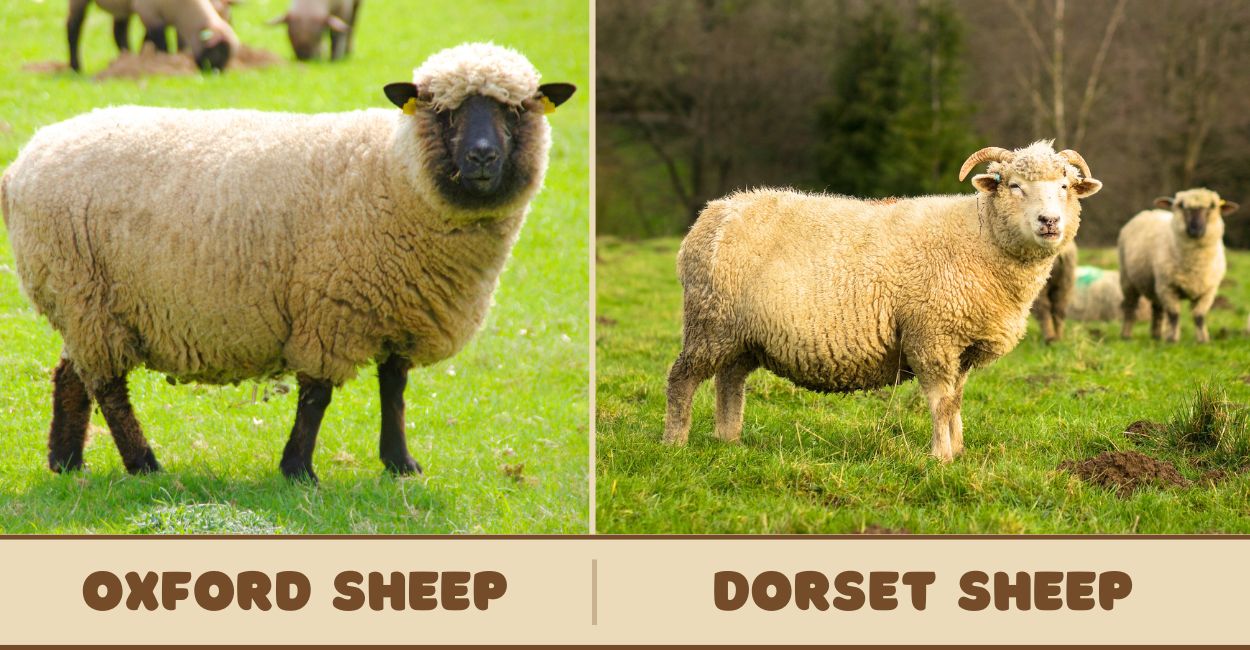
Sheep for Wool
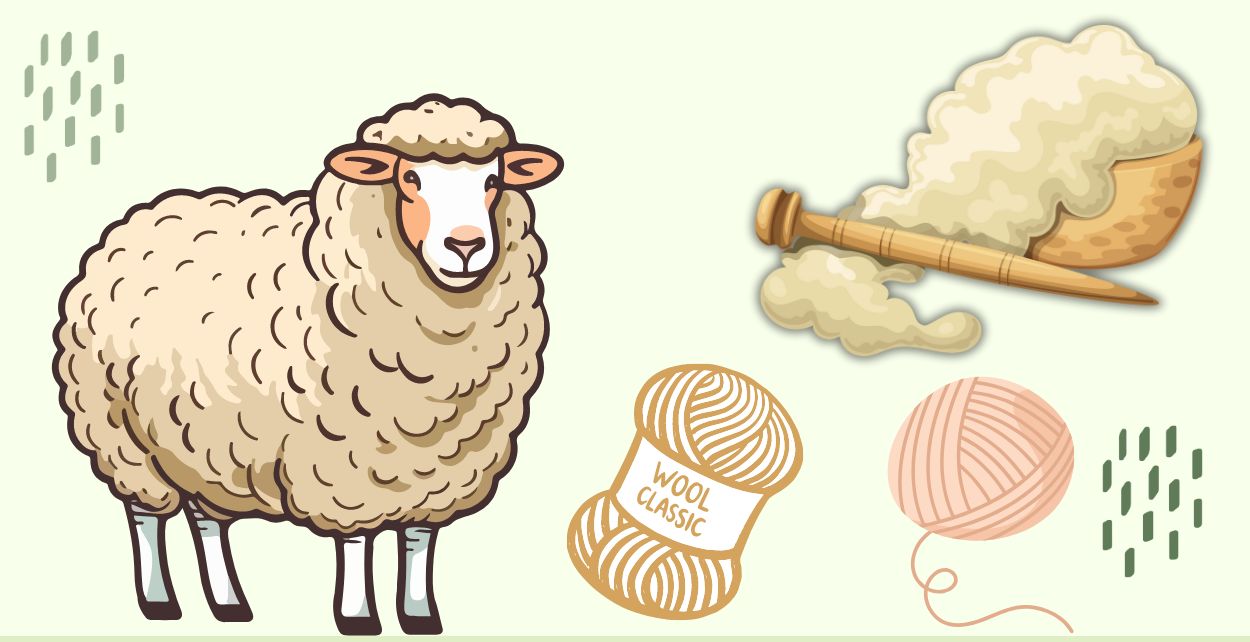
This type of sheep is also known as wool sheep and is raised for the production of wool.
While meat sheep are known for their body size, these sheep are renowned for their high-quality wool, which is used for the production of textiles and clothing.
Wool sheep breeds come in different sizes and have various wool characteristics. Some common wool characteristics of sheep include quantity, fineness, fiber diameter, staple length, natural waviness or crimp, color, luster or the shine of the wool fibers, softness, and strength.
Some common examples of sheep breeds known for their wool are Merino sheep, which produce some of the highest quality wool in the world, Cotswold sheep with curly locks, and Romney sheep.

Sheep for Dairy

Dairy sheep, or sheep raised for dairy production, are popular for the significant amount of milk they produce compared to other types of sheep, such as meat sheep.
Dairy sheep can produce high-quality milk with a rich flavor, high protein content, and essential nutrients such as vitamin B12, minerals like calcium, and healthy fats like omega-3 fatty acids.
Some types of dairy sheep can yield a significant amount of milk daily, while others produce milk that is higher in fat content, resulting in a richer and creamier product compared to other sheep milk.
Dairy sheep play a crucial role in dairy production, as their milk is used to make a wide range of dairy products, including cheeses such as Pecorino and Roquefort, as well as yogurt, ice cream, and butter.
Lacaune sheep, East Friesian sheep, Sarda sheep, and Manchega sheep are some of the dairy sheep.
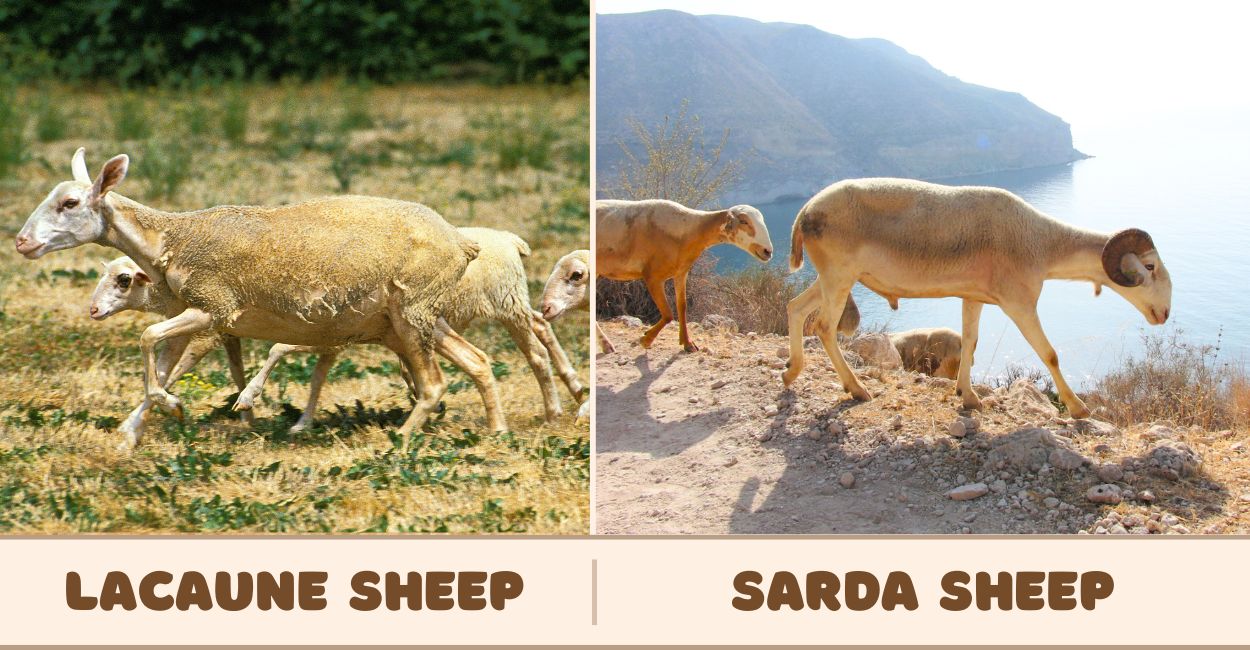
Dual-Purpose Sheep
There are sheep that serve not only one but multiple purposes.
These types of sheep are called dual-purpose sheep, which are specific breeds that fulfill two functions on a farm. They are usually capable of producing meat and wool, but also other combinations of meat and dairy, or even all three (meat, wool, and dairy).
Dual-purpose sheep stand out due to their versatility, offering a combination of meat, wool, and dairy production traits. Farmers often choose these sheep from an economic standpoint as they can utilize them for two purposes.
As examples of dual-purpose sheep are Columbia sheep, Dorset sheep, Romanov sheep, Polypay sheep, Jacob Sheep and Cheviot sheep.
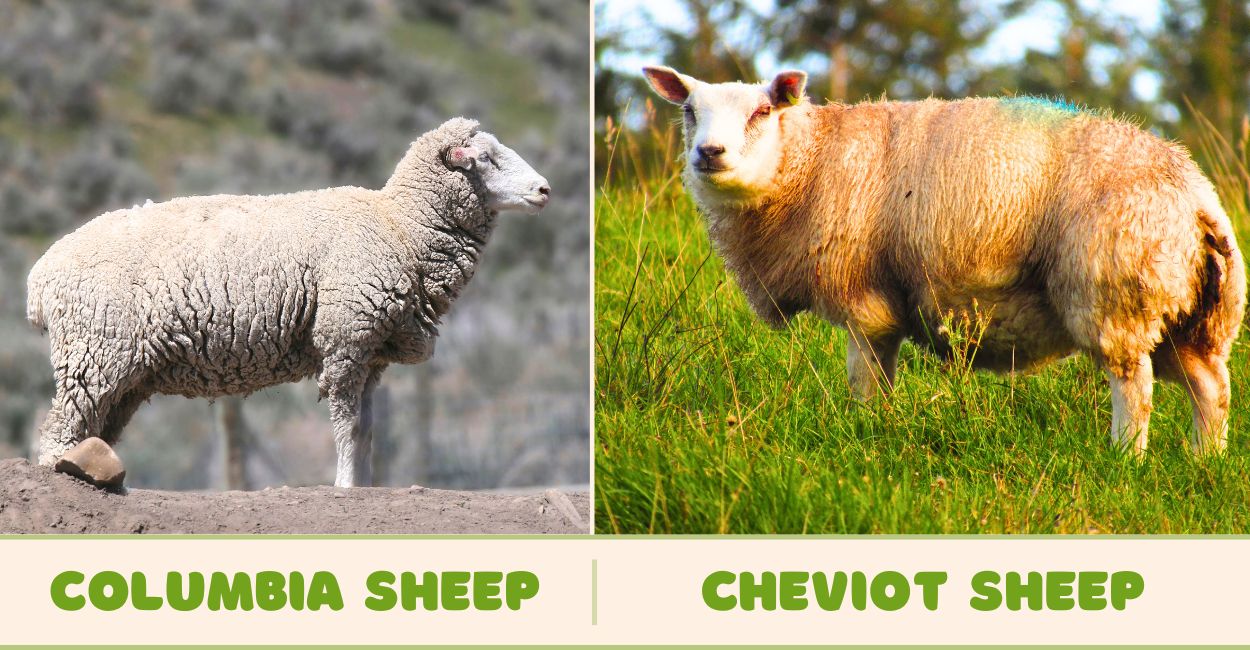
Sheep for Lanolin Production
In addition to their significance in meat, dairy, clothing, and textile markets, sheep also play a role in various industrial and cosmetic applications.
Specifically, a particular type of sheep, known as Lanolin sheep or Wool grease sheep, produces lanolin, a natural wax-like substance found in their wool.
These sheep are selectively bred to have wool with a higher concentration of lanolin, which is then collected after shearing.
Here are some popular breeds known for their lanolin-rich wool: Merino sheep, Cormo sheep, Corriedale sheep, and Rambouillet sheep.
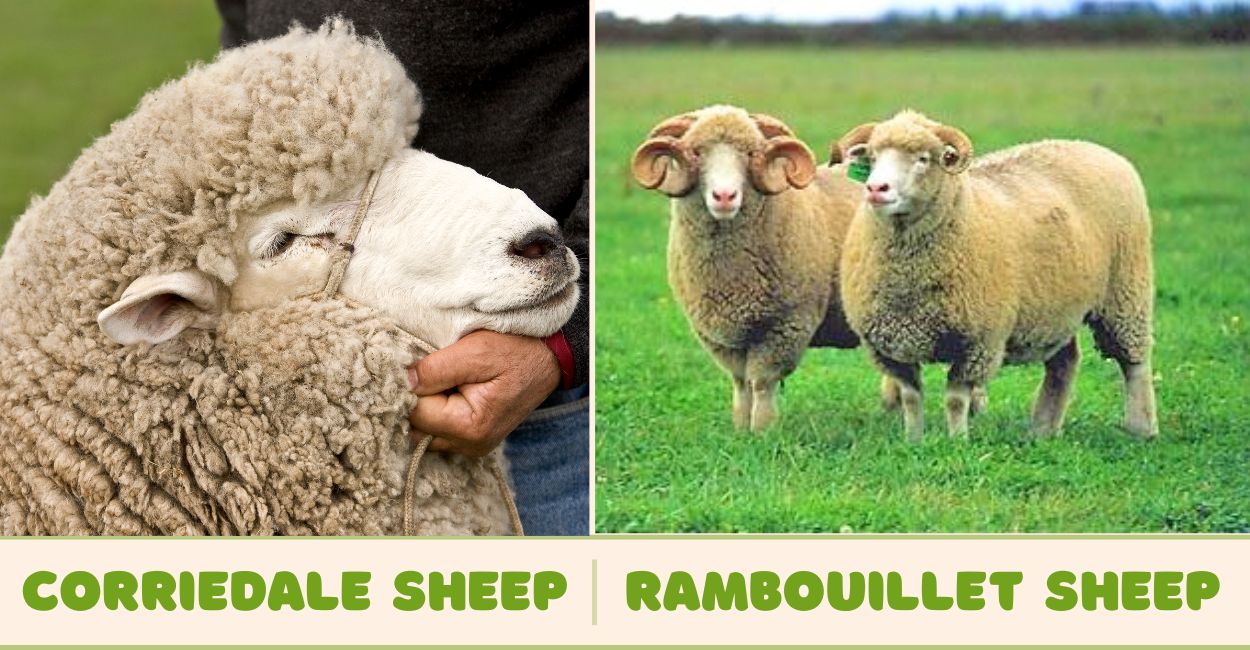
Sheep for Conservation Grazing
Sheep for conservation grazing refers to a specific management approach where sheep are utilized to help maintain and improve the biodiversity and ecological balance of specific habitats.
The sheep used in conservation grazing have excellent grazing habits and are highly adaptable to various landscapes.
They are also selective grazers, preferring to eat only certain plants. Also, thanks to their hooves, they help with soil compaction and control some woody plants or shrubs as they feed on more leaves than other grazing animals.
Sheep breeds for conservation grazing are Soay sheep, Hebridean sheep, Icelandic sheep, and Shetland sheep.
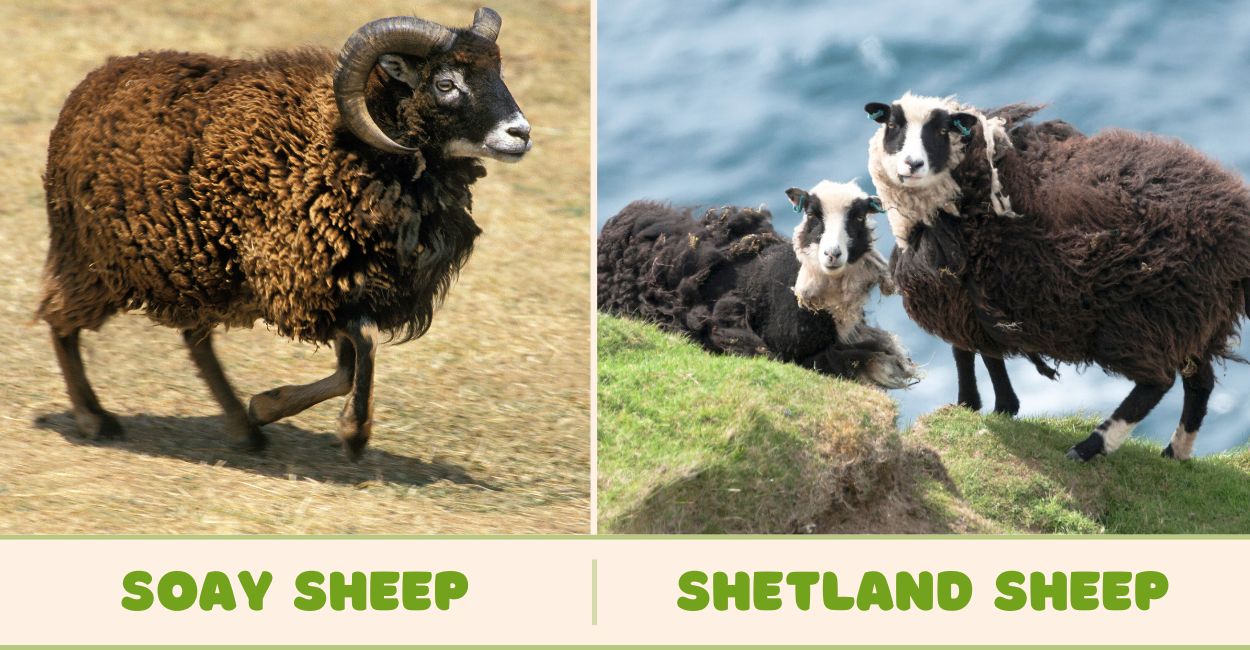
Sheep for Breeding Purposes
Farmers utilize these types of sheep to improve specific traits within their sheep flocks.
Sheep designated for breeding purposes are selected based on the desired traits to be carried on. For instance, if a farmer aims to achieve superior wool quality, they will choose a sheep with individual desirable traits for wool production.
Among the most common desirable traits in sheep are superior wool or meat production.
Another important thing when selecting sheep for breeding purposes is resistance to common sheep diseases. This is vital in the breeding process to promote the health and robustness of the offspring.
The following sheep are bred and managed for their superior meat production characteristics: Dorset, Hampshire, Southdown, and Suffolk. As for better wool, there are Merino sheep, Cormo sheep, Bluefaced Leicester, and Rambouillet.
Type of Sheep based on coats
There are two main types of sheep based on their coats: hairy sheep and wool sheep.
Hair Sheep
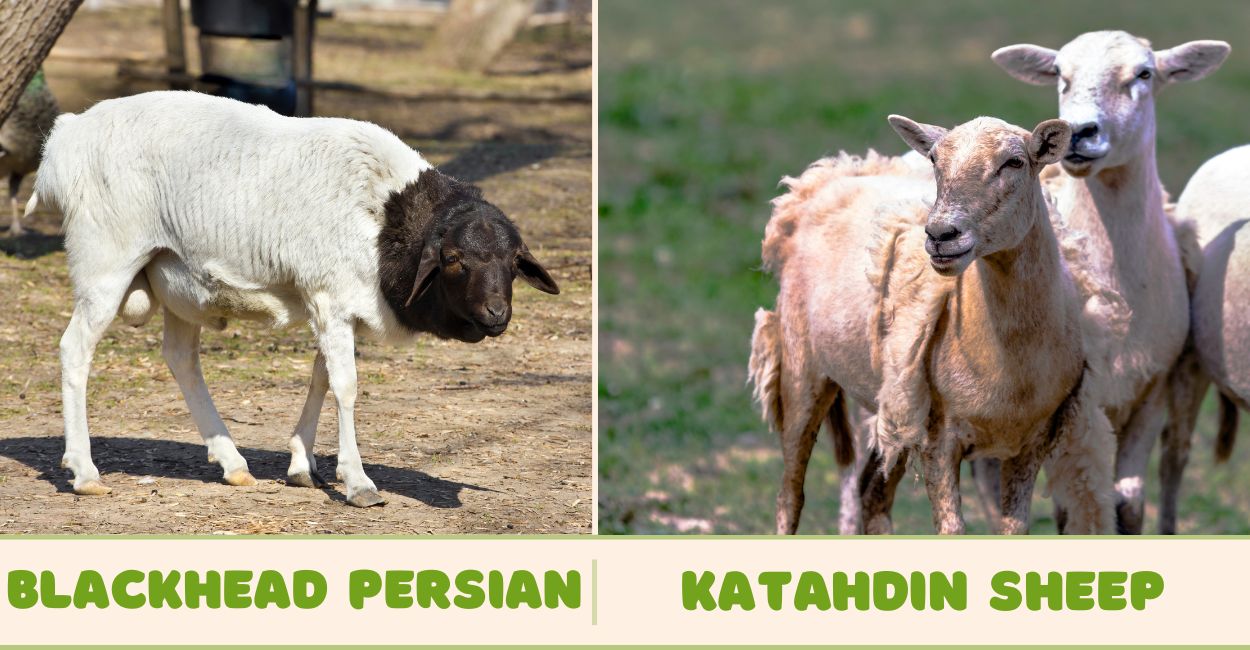
Hairy sheep are the ones that have coats made of hair rather than wool.
They are also known as shedding sheep because they shed their coats as the weather gets warmer.
Among farmers, they are popular because taking care of them is incredibly easy, as they do not require shearing or trimming. This simplicity saves both time and expenses.
Hairy sheep are well-suited for moderate or warm climates due to their short and less dense hair.
Examples of hairy sheep breeds include Romanov, Blackhead Persian, Katahdin, Dorper, American Blackbelly, and St. Croix.
Wool Sheep
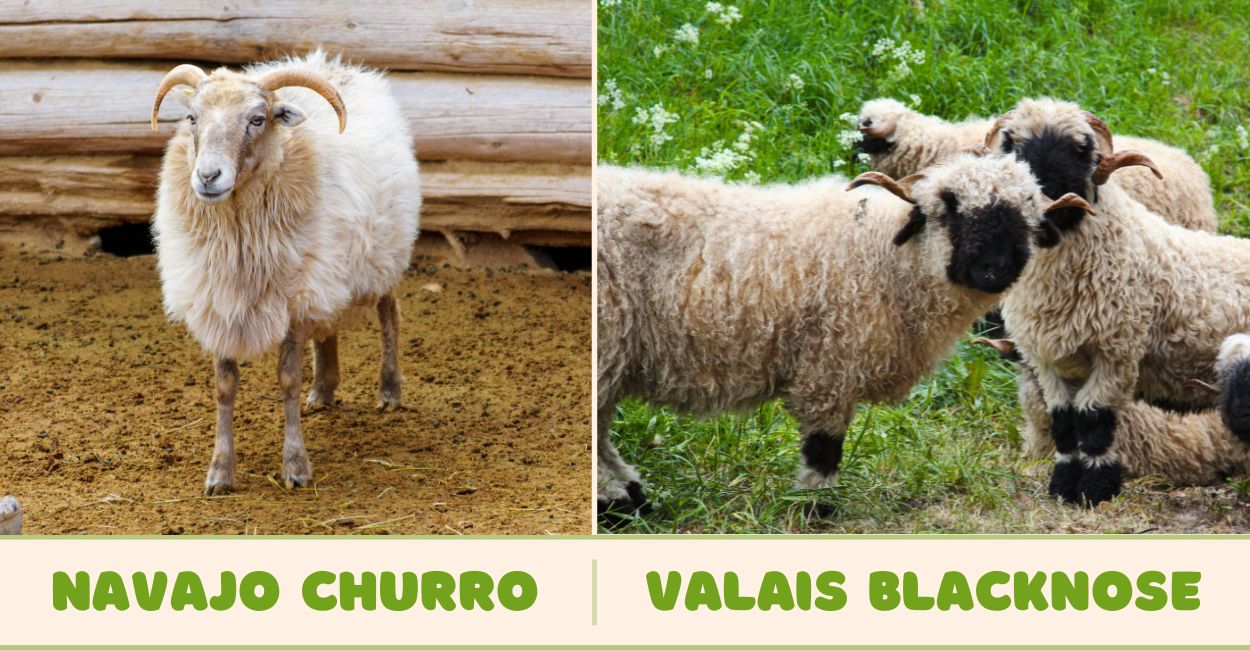
Wool sheep have great coats made from soft wool fibers. The wool of these sheep grows continuously and requires brushing, trimming, and shearing.
Compared with hairy sheep, those with wool need more farmer intervention to manage their wool and maintain their health.
Regular shearing is necessary for wool sheep to prevent their fleece from becoming too long and cumbersome, which could lead to health issues.
However, all the care and effort pays off, as the wool from these sheep is utilized in various textile industries, producing clothing, blankets, and other woolen products.
Greyface Dartmoor, Lincoln, Navajo Churro sheep, Valais Blacknose, Perendale, Cormo, and Wensleydale.
Type of Sheep based on Wool Type
Sheep wool varies in several ways, but one of the primary factors that determine its quality is the micron count.
When using the micron measurement to classify wool, sheep can be categorized into three types:
- Fine wool sheep, which have a micron count between 17 to 20.6022 microns.
- Medium wool sheep, which have a micron count between 22.05 and 29.3 microns.
- Long or coarse wool sheep, which have a micron count greater than 31 microns.
1. Fine wool sheep
Fine wool sheep have high-quality, soft, and luxurious wool that is used for the production of ultra-soft clothing.
These types of sheep are selectively bred to produce fine, dense fleece that is highly appreciated in the textile industry. Some fine wool sheep breeds include Merino, Cormo, Rambouillet, and Polwarth.
These sheep can also be raised for meat production. They grow very well in regions with temperate climates, as extreme heat can affect the quality of their wool. Regular shearing is necessary, typically done once or twice per year.
2. Medium wool sheep
The fibers from medium wool sheep breeds are both strong and durable, yet soft and comforting, resulting in versatile products.
3. Long or Coarse wool sheep
These sheep have one of the longest wool and coarser fibers compared with fine and medium wool breeds.
The wool from these sheep is usually used to make carpets, rugs, upholstery, and blankets. It is rarely used for clothing because it is very heavy and not as soft as fine wool.
Lincoln, Border Leicester, Cotswold, and Wensleydale are some of the long wool sheep.
These sheep need to be sheared to maintain a healthy fleece. Shearing is typically done annually, but the specific schedule may vary depending on climate conditions and the sheep’s individual needs.
Type of Sheep based on Size
The sheep classification based on size is mainly about the sheep’s weight and body size.
The three primary types of sheep based on size are:
Large Sheep
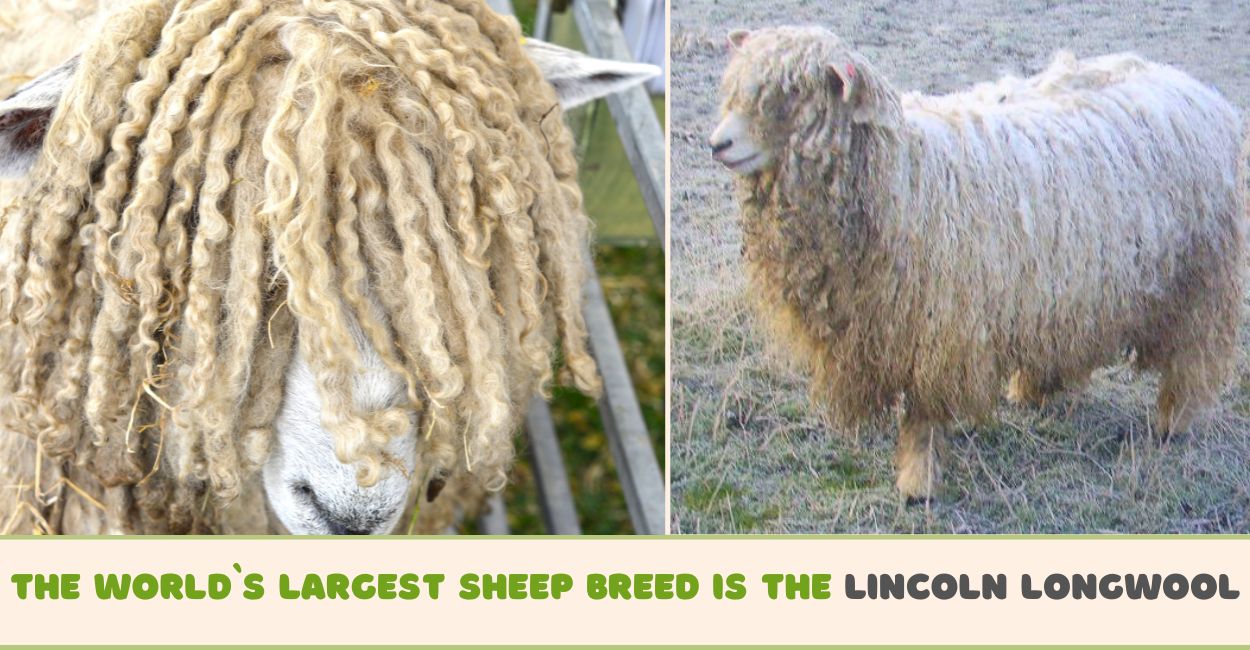
Large sheep are the ones that reach a weight of 350 lbs as male adults and more than 220 lbs as female adults.
Large sheep breeds include Suffolk, Hampshire, Texel, and Columbia. Their robust and strong bodies make them well-suited for meat production due to their carcass size.
Medium Sheep
The medium-sized sheep have a weight under 200 lbs as female adults and under 300 lbs as male adults, but they still have a well-developed muscular body.
Medium-sized sheep are versatile and can be raised for both meat and wool production. Examples of such breeds include Dorset, Cotswold, Polypay, and Katahdin.
Small and miniature sheep
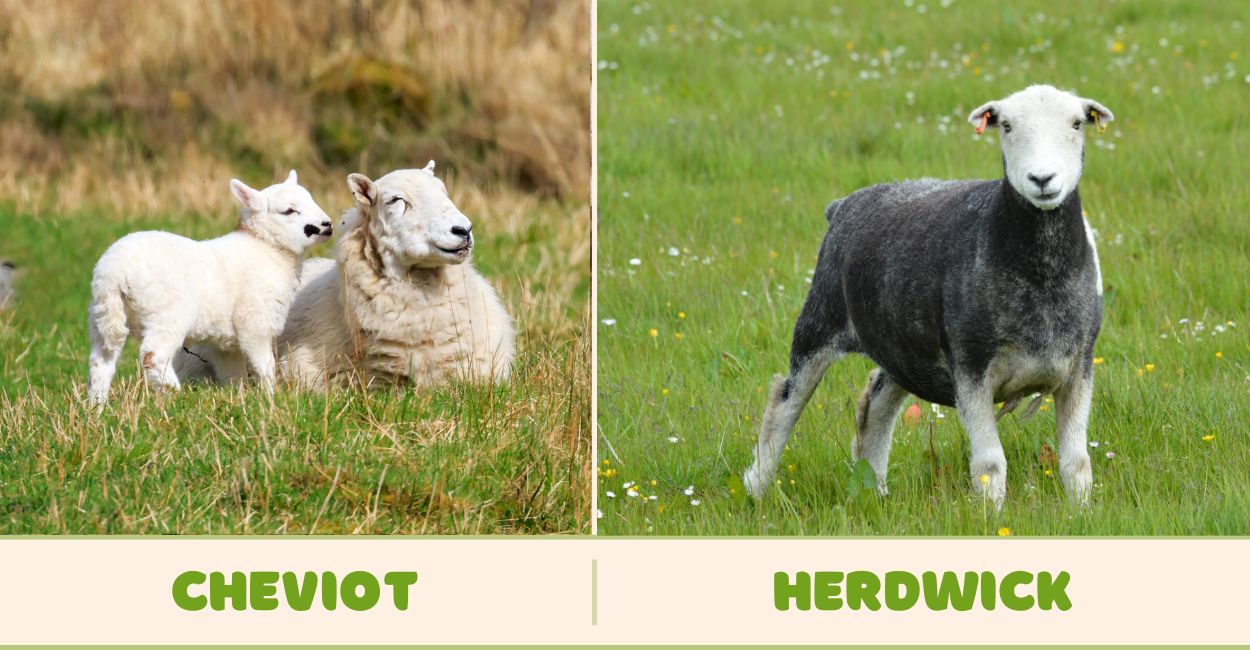
Small or miniature sheep are tiny, with adults reaching a maximum weight of around 130-140 lbs.
Some prefer miniature sheep for wool production or hobby farming. Herdwick, Cheviot, and Southdown are some of the miniature breeds.
Type of Sheep based on Horns
Another characteristic that makes possible the classification of sheep is their horns.
Here are the main types of sheep based on horns:
Polled Sheep
Polled sheep are sheep without horns.
These hornless sheep have a smaller and smoother head and are preferred by farmers due to the absence of horns, as it eliminates the risk of injury. Some polled sheep breeds include Poll Dorset and Poll Merino.
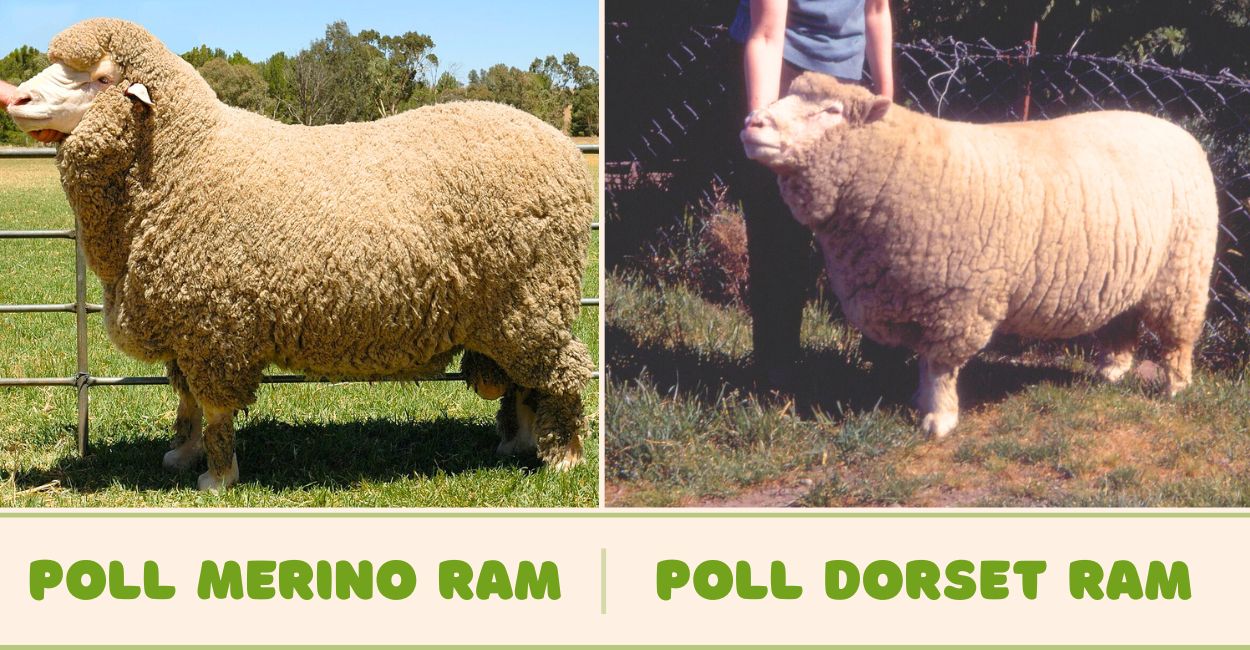
Horned Sheep
Contrary to polled sheep, horned sheep naturally grow horns.
Hollow in nature, a sheep’s horns consist of a bony core attached to the skull and covered by a keratinous sheath. The size, shape, and curvature of the horns can vary significantly between different sheep breeds.
Some examples of horned sheep breeds include Mouflon, Scottish Blackface, Hebridean, Ladoum, Racka, and Priangan.
Scurred Sheep
Scurred sheep are special, as they have naturally formed horns, but the horns do not fully develop during their life.
These partially developed horns are similar to small bony protuberances on the sheep’s head. Usually, this characteristic results from selective breeding.
Heritage or Rare Sheep Breeds
The last type of sheep is the heritage and rare breed.
These sheep breeds have unique features and historical importance, and they are endangered compared to other commercial sheep breeds.
According to the Livestock Conservancy, the following sheep breeds still have conservatory status as threatened and critical: Teeswater (critical), Black Welsh Mountain (threatened), Leicester Longwool (threatened), Navajo-Churro (critical), Jacob (threatened), Karakul (threatened), and Florida Cracker (critical).
How to choose the right type of sheep breed
When choosing a type of sheep, you should ensure that the sheep breed matches your needs and goals as a farmer.
This alignment between farm practices and breed applies not only to sheep but also to all livestock. If there is no match between farm practices and the sheep breed, the potential for failure is quite obvious.
So, how do you choose the right type of sheep for you?
In the following paragraphs, I’ll help you by providing advice on what to consider to make the right decision.
Farm Space and Resources
From my long experience in farming, I advise you to decide whether you want to raise only sheep or if the sheep will be part of your livestock.
In both scenarios, you need to assess how much space you have available on your farm for them. Some breeds require a larger grazing area, while others can thrive in smaller farms or even backyards.
Main Purpose
You have to determine why you want to raise sheep.
Each farmer has a purpose when raising animals. Are you interested in meat production, wool production, or a combination of both?
Some sheep breeds are specifically bred for meat, while others excel in wool production.
Climate
Analyze your region’s climate and ensure that the sheep you want can be raised in that environment.
Some types of sheep are highly adaptable to diverse environments, but others are better suited for harsh winters due to their wool, while some thrive in hot and dry climate conditions.
Temperament
I also suggest you determine your farming skills. If you are new to farming and raising animals, do not choose a difficult sheep breed with an aggressive temperament.
It is better to search for breeds that are docile, easier to handle, and even hornless. Believe me when I say that handling sheep with horns is not easy.
Breed Characteristics
When I choose a breed, I always consider the breed characteristics.
If I want a breed for meat, then I take a look at the overall size and growth rate. If I want to focus on breeding, then I try to find out about the fertility and mothering ability of the breed.
If you have any specific thoughts, then research the traits of the sheep breeds.
Market Demand
Another thing I do when I want profitability with animals is research the market demand.
It is important to take a look at the market demand for certain types of sheep in your area or proximity. It could be that some breeds have a higher market value for their wool or meat than others. The market demand is always different from region to region.
These are the things that I would recommend you analyze when choosing a type of sheep. Conducting thorough research, evaluating your own circumstances, and even asking for advice from experienced farmers will help you choose the right sheep breed for you.
FAQ’s
The information provided in the FAQ category was most recently updated in August 2023.
How many sheep breeds are in the world?
There are over 1,000 different sheep breeds in the world.
Some breeds are not that well-known or common, while others are popular, especially among farmers.
The exact number of sheep breeds can be challenging to determine precisely, as new breeds may develop over time, and others might become extinct or merge with existing breeds.
How many types of sheep are there in the UK?
There are 90 types of sheep breeds in the UK, according to the National Sheep Association (NSA).
According to the same source, the UK has more sheep breeds than any other country in the world.
How many sheep are raise in the UK?
There are 33 million sheep raised in the UK annually.
According to the UK official government website, the number of sheep and lambs in the UK has increased by 0.3% to 33 million in 2022.
| Year | Female Breeding Flock | Other Sheep and Lambs | Total |
|---|---|---|---|
| 2018 | 16,285,553 | 17,495,264 | 33,780,817 |
| 2019 | 16,035,049 | 17,544,583 | 33,579,632 |
| 2020 | 15,369,528 | 17,327,913 | 32,697,441 |
| 2021 | 15,624,233 | 17,332,789 | 32,957,022 |
| 2022 | 15,779,210 | 17,287,269 | 33,066,478 |
How many breeds of sheep are in the US?
There are 47 different breeds of sheep in the US, according to the American Sheep Industry Association.
The association includes more than 100,000 sheep producers and has divided the 47 breeds into six different breed types: meat, fine wool, long wool, dual-purpose, hair, and minor breeds.
How many sheep are raised in the US?
There are 5.2 million sheep raised in the US, mostly in Texas and California, according to the US Department of Agriculture (USDA).


